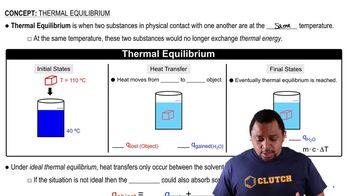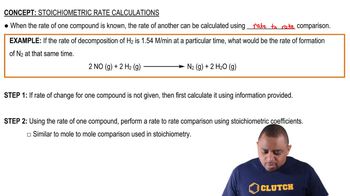Here are the essential concepts you must grasp in order to answer the question correctly.
Solubility Product Constant (Ksp)
The solubility product constant (Ksp) is an equilibrium constant that quantifies the solubility of a sparingly soluble ionic compound. It is defined as the product of the molar concentrations of the ions, each raised to the power of their coefficients in the balanced dissolution equation. For example, for Cu3(PO4)2, Ksp can be expressed as [Cu^2+]^3[PO4^3-]^2, where the concentrations of copper and phosphate ions are used to calculate the solubility.
Recommended video:
Solubility Product Constant
Dissolution Equilibrium
Dissolution equilibrium refers to the dynamic balance between the solid phase of a compound and its ions in solution. When a solid dissolves, it dissociates into its constituent ions, and the rate of dissolution equals the rate of precipitation at equilibrium. Understanding this concept is crucial for calculating solubility, as it allows us to relate the concentrations of ions in solution to the Ksp value.
Recommended video:
Stoichiometry in Solubility Calculations
Stoichiometry involves the quantitative relationships between the amounts of reactants and products in a chemical reaction. In solubility calculations, it is essential to use the stoichiometric coefficients from the balanced dissolution equation to determine the molar concentrations of ions produced from a given amount of solute. For Cu3(PO4)2, the stoichiometry indicates that three moles of Cu^2+ and two moles of PO4^3- are produced for every mole of the compound that dissolves, which is vital for calculating its solubility.
Recommended video:
Stoichiometric Rate Calculations
 Verified step by step guidance
Verified step by step guidance


